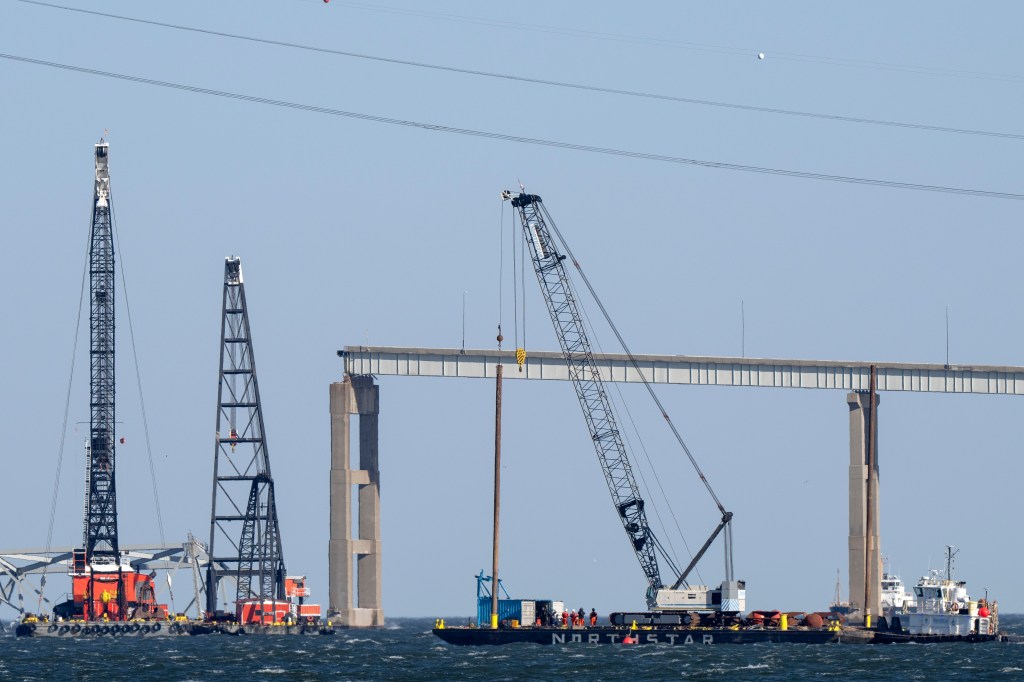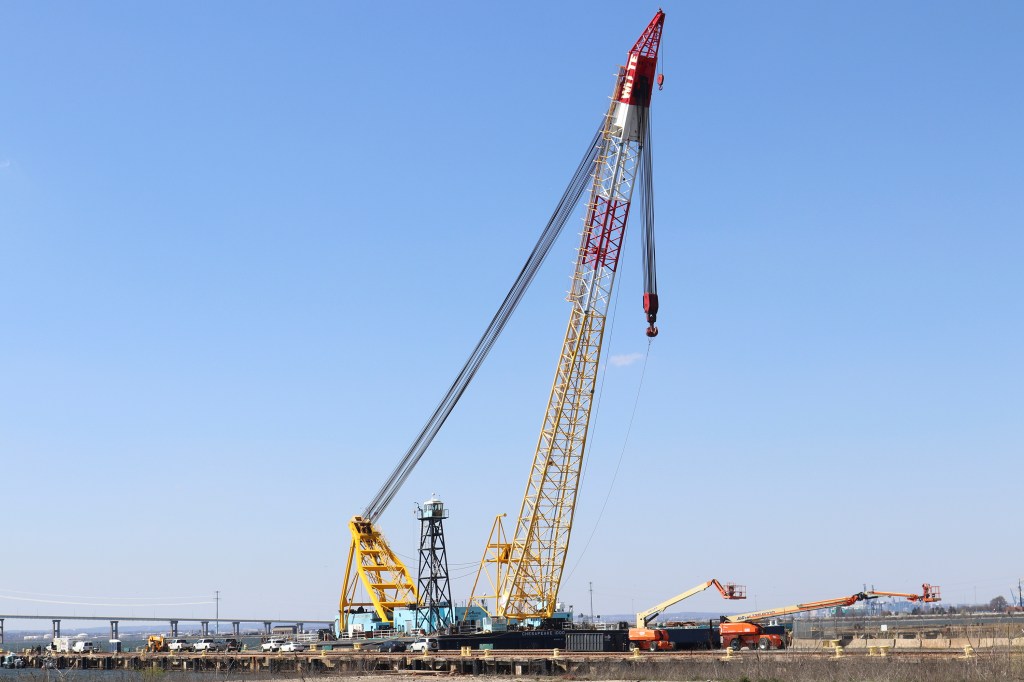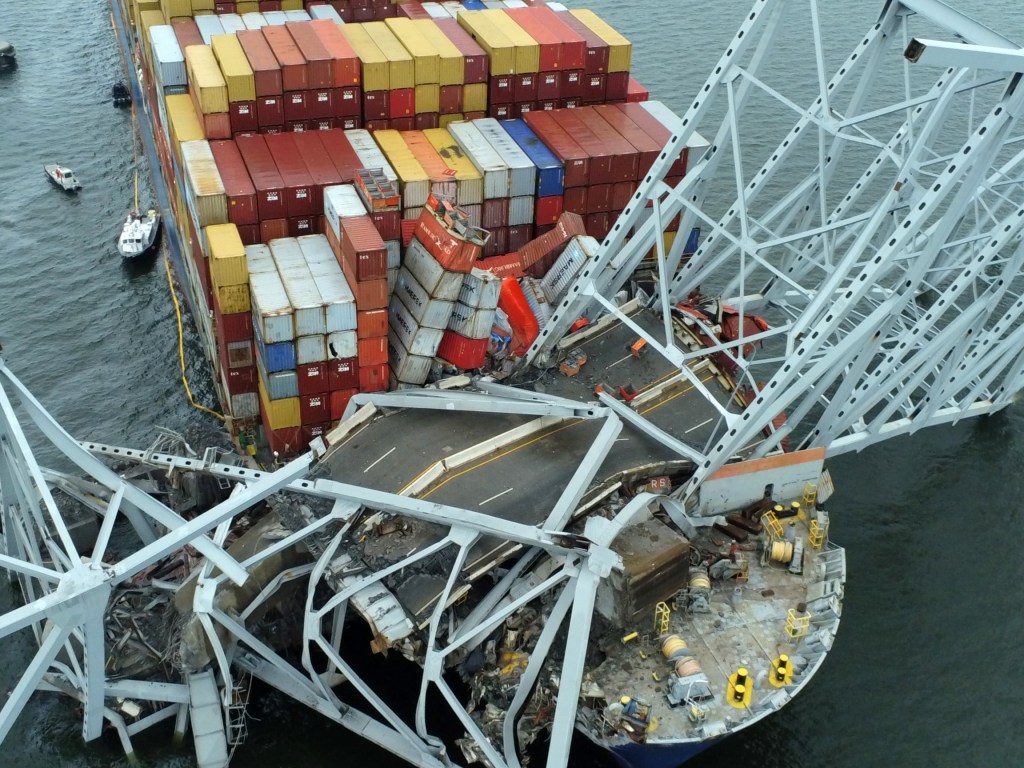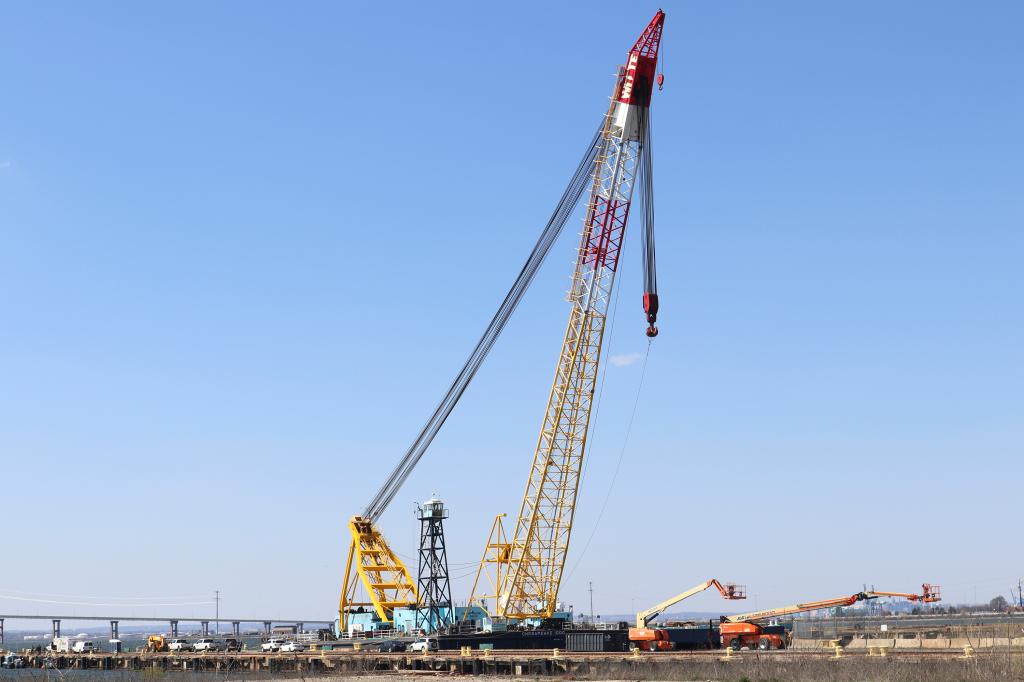Fleet of massive cranes arrive at Baltimore’s Key Bridge to begin clearing wreckage following deadly collapse
The first piece of the collapsed Francis Scott Key Bridge was slated to be lifted out of the Patapsco River in Maryland on Saturday, following the arrival of a fleet of massive cranes, officials said.
“I’m really proud to announce that the governor said we’re going to conduct our first lift today on a piece of a portion of the bridge,” U.S. Coast Guard Rear Adm. Shannon Gilreath said at a press conference on Saturday afternoon.
It is the first step toward reopening the Port of Baltimore following Tuesday’s deadly bridge collapse caused by the Singapore-based Dali tanker, which lost power shortly after leaving the Port of Baltimore. Six construction workers repairing potholes on the thoroughfare were killed in the disaster.
Reopening the port remains the “number one priority,” Gilreath said.
Divers are evaluating how portions of the bridge can be cut up for future lifts.
“We’re going to move as fast as possible,” Maryland Gov. Wes Moore told the gathered reporters.
“We are going to ensure the safety of our first responders and we are not going to compromise one for the other.”
“Our economy depends on the Port of Baltimore and the Port of Baltimore depends on vessel traffic,” he added.
The Chesapeake 1000 crane barge, which can lift 1,000 tons and is the largest of its kind on the Eastern Seaboard, arrived Friday morning.
The vessel was built in 1972 by the CIA to recover a 3,000-ton Soviet Golf II ballistic missile submarine that sank in 1968, according to the US Naval Institute.
It was joined by the Ferrell, a 200-ton lift capacity revolving crane barge, and the Oyster Bay, a 150-ton lift capacity crane barge, all contracted by the US Navy.
Over the next five days, seven more cranes, 10 tugs and nine barges will arrive at the site to remove the debris and the ship, according to the agencies handling the response.
The broken pieces of the bridge sitting on the bow of the 213-million-pound Dali — which is nearly as long as the Eiffel Tower — weigh as much as 4,000 tons.
A section of the span pushed the bow of the ship to the harbor’s bottom, Transportation Secretary Transportation Secretary Pete Buttigieg said at a briefing earlier this week.
President Biden on Friday said he plans to visit the site of the devastation this coming week though a specific date was not clear.
He confirmed his trip to reporters following a star-studded fundraiser at Radio City Music Hall with former Presidents Barack Obama and Bill Clinton on Thursday.
It could take several more weeks for enough debris to be cleared to reopen the crucial port and it is unclear how long it will take to replace the bridge, officials said.
Experts say the Key Bridge, which was designed in the 1970s, did not have a warning system or fenders, both of which have become standard in more recent decades.
Fenders can ease the blow of any impacts, Politico reported, and warning systems can stop traffic or at least warn motorists.
“Protective systems are not just a good idea, they should be mandatory,” Roberto Leon, a professor of structural engineering and materials at Virginia Tech, told the outlet.
Police happened to be stationed near the bridge and stopped traffic once the Dali’s mayday call came through, otherwise the death toll could have been much higher.
“We will, moving forward, look at any and all options,” said Moore when asked about implementing a warning system.
“There’s nothing I will not do to make sure the people in my state are safe.”
Crews were still assessing the damage and monitoring for oil spills as of Friday, according to reports.
The tanker had 764 tons of hazardous materials aboard, including corrosives, flammables and lithium ion batteries, some of which were dumped into the harbor.
Footage released by the National Transportation Safety Board showed hazardous material investigators and engineers aboard the Dali on Thursday, surveying the extensive damage aboard the ship and downloading the vessel’s voyage data.
The cause of the ship’s power outage, which ultimately led to the crash, is still under investigation but one factor being considered is fuel contamination.
Keep up with today's most important news
Stay up on the very latest with Evening Update.
Thanks for signing up!
Experts told NBC News it is an “open secret” that fuel contamination issues plague the shipping industry, but they often occur at sea where they can be managed without incident.
The Dali cargo ship had not stopped for fuel since Feb. 20, according to analysis by NBC.
It stopped twice in China and then in South Korea and although contamination has not been reported out of either country, there is no sign of the vessel stopping again to refuel along its journey through the Panama Canal, New York, Virginia and Baltimore.
The Dali would have needed more fuel to make it to Sri Lanka, where it was headed next, according to experts.
The ship could have been running on fuel from the bottom of its tank, where heavier contaminants settle, when the power went out, Jonathan Arneault, the CEO of FuelTrust, told NBC.
“The smell of burned fuel was everywhere in the engine room and it was pitch black,” one officer aboard the ship said.























